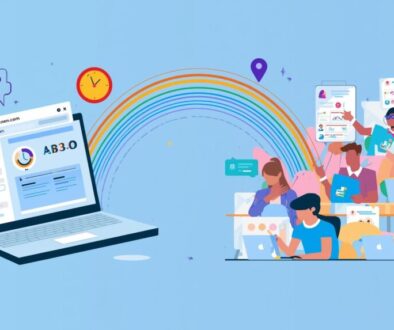HTML Simplified: Tips and Tricks for Efficient Coding
The development of web pages primarily employs HTML as its language. To construct effective, user-friendly websites, understanding the foundations of HTML is essential. This article explores the tips and tricks associated with coding and highlights the importance of an HTML course free in that regard.
Understanding the Basics of HTML
Before diving into the tips and tricks, let’s establish a strong foundation by briefly reviewing the basics of HTML. HTML is composed of elements, which are represented by tags enclosed in angle brackets. Each tag serves a specific purpose and helps structure the content of a web page.
Features of HTML Course
Practical exercises and projects are an integral part of HTML online courses. Learners are encouraged to apply their knowledge by coding web pages and building simple websites.
Interactive Learning
Many HTML online courses incorporate interactive elements, such as quizzes, challenges, and coding exercises, to engage learners and reinforce their understanding of HTML.
Video Tutorials
Video lessons provide a dynamic way to learn. Instructors may use video tutorials to explain complex concepts, demonstrate coding techniques, and offer real-world examples.
Text-Based Resources
Alongside videos, the best HTML courses online often include written materials like articles, tutorials, and reference guides. These resources provide in-depth explanations and serve as handy references.
Instructor Support
A free HTML course may offer access to instructors or teaching assistants who can answer questions, provide guidance, and offer feedback on projects and assignments.
Online Forums or Communities
Many HTML online courses include discussion forums or online communities where learners can interact with peers, share experiences, and seek help or advice.
Progress Tracking
Learners can typically track their progress through the course, seeing what they’ve completed and what’s next.
Certification
Some HTML courses online offer certificates on completion. These certificates can be a valuable addition to your resume and may be recognized by employers or clients.
Responsive Design
Courses often teach responsive web design principles, ensuring learners understand how to create web pages that adapt to various screen sizes and devices.
Practical Projects
In addition to exercises, courses may include larger projects that allow learners to showcase their skills and create a portfolio of work.
Access to Tools
The best online HTML courses provide access to web development tools and code editors commonly used in the industry, helping learners practice with the tools they’ll use in real-world scenarios.
To have a better understanding, have a look at this video:
https://youtu.be/Y2LIDLmfWho?si=TWhVc3F3RrdLlBtN
HTML5 and Modern Techniques
A good HTML free online course covers the latest HTML5 standards and best practices for web development, including semantic HTML and accessibility.
Real-Life Examples
Instructors often use real-life examples to illustrate how HTML is used in web development projects. This makes the learning experience more practical and relevant.
Free and Paid Options
An HTML free online course can come in both free and paid formats, making them accessible to a wide range of learners with varying budgets.
Lifetime Access
Some courses offer lifetime access, allowing learners to revisit the course materials and resources at any time, even after completing the course.
Community and Networking
Courses may facilitate connections with other learners or professionals in the web development field, creating opportunities for networking and collaboration.
Tips to Make Your HTML Coding More Efficient
Proper indentation and formatting make your HTML code more readable and maintainable. Consider using HTML beautifiers or code editors that automatically format your code, ensuring it follows best practices.
Comments
Comments are your best friend when it comes to documenting your code. They provide context and explanations for your HTML elements and help other developers understand your code. Use `<!– your comment here –>` to add comments within your HTML.
Minimize Inline Styles
While inline styles are convenient, they can clutter your HTML and make it harder to maintain. It’s better to use external CSS files to define styles, keeping your HTML clean and your design consistent.
Avoid Deprecated Elements
Some HTML elements and attributes are deprecated or obsolete in HTML5. Avoid using these, as they may not be supported in modern browsers. Instead, opt for the latest HTML5 standards.
Use External Resources
Leverage external resources like fonts and libraries hosted on content delivery networks (CDNs) to enhance your web pages.
Accessibility
Use semantic HTML and add alt attributes to images to ensure screen readers and assistive technologies can consume your content.
Validation
Validate your HTML code using online validators like the W3C Markup Validation Service. This helps you identify and fix errors, ensuring your web pages render correctly in different browsers.
Benefits of HTML Course
With HTML skills, you can create and edit web content without relying on web developers, giving you more independence and control over your online presence.
Cost Savings
For business owners and entrepreneurs, knowing HTML can save costs by allowing you to make website updates and changes without the need for a dedicated web developer.
SEO Benefits
Understanding HTML helps you optimize your web content for search engines. You can implement best practices for on-page SEO, improving your website’s visibility in search results.
Accessibility
HTML courses often emphasize the importance of web accessibility, ensuring that your web content is usable by individuals with disabilities, which is not only ethical but also necessary to reach a wider audience.
Continuous Learning
HTML is continuously evolving. Taking an HTML course allows you to stay up-to-date with the latest web standards and practices.
Problem-Solving Skills
HTML coding often involves troubleshooting and problem-solving. Through practice, you can develop strong critical thinking and debugging skills. The salary range for HTML developers is $88,313 to $144,275 per year.
Portfolio Development
Working on actual projects while you learn HTML allows you to compile a portfolio of your work that can be shown to prospective companies or clients.
Conclusion
The foundation of web development is HTML, which you must learn to create effective and user-friendly websites. You may streamline the HTML coding process and produce visually appealing and functioning web pages by using the advice provided in this article and by enrolling in free HTML courses. Recall that the secret to successful web development is well-organized, semantically sound HTML code.



